Georgia Operation Lifesaver
About GA OL
1974 - 2024
Commemorating 50 years of helping to reduce Highway-Rail Crossing Collisions and Trespassing Incidents in Georgia
Operation Lifesaver Mission
Operation Lifesaver is a national, non-profit education and awareness program dedicated to ending tragic collisions, fatalities and injuries at highway-rail grade crossings and on railroad rights of way. To accomplish its mission, Operation Lifesaver promotes 3 E's of safety:
- Education: Operation Lifesaver strives to increase public awareness about the dangers around the rails. The program seeks to education both drivers and pedestrians to make safe decisions at crossings and around railroad tracks.
- Enforcement: Operation Lifesaver promotes active enforcement of traffic laws relating to crossing signs and signals and private property laws related to trespassing.
- Engineering: Operation Lifesaver encourages continued engineering research and innovation to improve the safety of railroad crossings.
Operation Lifesaver History
Operation Lifesaver started in Idaho in 1972 when the national average of collisions at highway-rail crossings exceeded 12,000 annually. A six-week public awareness campaign called "Operation LifeSaver" was sponsored by the office of Governor Cecil Andrus, the Idaho Peace Officers and Union Pacific Railroad as a one-time, one-state initiative.
During the campaign's first year, Idaho's crossing-related fatalities dropped by 43 percent. The next year, the Operation Lifesaver campaign spread to Nebraska where their collision rate was reduced by 26 percent.
Programs were started in Kansas and Georgia the following year, in 1974, and similar success was experienced. Georgia reduced their crossing-related fatalities by 64 percent the first year.
Between 1978 and 1986, while Operation Lifesaver operated under the auspices of the National Safety Council (NSC), other states started independent Operation Lifesaver programs. In 1986, the national program was released from the NSC and incorporated as a national, non-profit, educational organization with IRS Code 501(c)(3) tax-exempt status.
Georgia Operation Lifesaver History
Georgia Operation Lifesaver began in 1974, under the auspices of the Georgia Safety Council, until 1988 when a full-time state coordinator was retained to re-organize the state program. Georgia Operation Lifesaver is now incorporated in the state of Georgia as a non-profit, tax-exempt, educational organization for highway-rail grade crossing safety and trespass prevention, with IRS 501(c)(3)status
Currently, there are over 70 active affiliate members including federal, state and local governmental agencies; businesses (including the state's railroads); civic and service organizations; and other volunteer groups dedicated to safety at grade crossings and around tracks.
Free programs are presented to schools, businesses and civic organizations as well as specialized programs for school bus drivers, professional drivers, law enforcement and emergency responders. Over 100 Operation Lifesaver Authorized Volunteers (OLAVs) facilitate free presentations to educate children and adults about rail safety. To request a free presentation, or to learn more about Operation Lifesaver, please contact us.
GA OL Events
2021-2022:
Various activities conducted mostly remotely and virtually due to Pandemic precautions, and also referrals to the national support center website ww.oli.org for downloading important Rail Safety handouts and videos. Also MANY EMAILED Jennie at gaol@mindspring for additional help.
While our annual "Appreciation Luncheon" had to be cancelled this year, along with our quarterly membership meetings, we emailed pertinent information and committee reports to all of our members, our volunteer presenters (OLAVs), and sponsors, promising to have a special luncheon next year if circumstances allow.
Our sincere gratitude to our Board of Directors for their support in helping guide us through this unusual year and especially to Board Chairman Franklin Brown for ensuring that our State Coordinator always had his full attention.
2022 Activities: Due to continuing COVID-19 restraints, we will continue practicing all safety protocols until such time that we are notified it is safe to do in-person meetings and community events. In the meantme, any in-person requests should continue to be forwarded to the State Coordinator for handling. We are providing OL Handouts and information to all requesting communities and businesses as well as government agencies, first responders, transportation directors/school bus driver trainers, commercial truckers, teen drivers and others. Further, all requests are being handled either by the State Coordinator or Authorized Volunteers who have been cleared by OLI as well as their own employer to again do in-person activities. Safety is always our primary concern.
GA OL Safety Partners
- AAA Auto Club South
- Allstate Insurance Company
- Amtrak
- Association of American Railroads (AAR)
- Athens Line, The
- Atlanta Electrical Contractors Association (AECA)
- Blue Ridge Scenic Railway
- Centers for Disease Control & Prevention (CDC)
- Chattahoochee Industrial Railroad
- Chattooga & Chickamauga Railway Co.
- CSX DePriest Signal Shop
- CSX Transportation
- Dixie Precast, Inc.
- First Coast Railway
- Full Service Railroad Consulting, Inc.
- Fulton County Railway
- General Motors Company
- Genesee & Wyoming Rail
- Georgia & Florida Railway
- Georgia Association of Broadcasters
- Georgia Association of Chiefs of Police
- Georgia Association of Railroad Passengers
- Georgia Building Authority
- Georgia Central Railway, Vidalia
- Georgia Department of Driver Services
- Georgia Department of Education
- Georgia Department of Labor
- Georgia DPS/Georgia State Patrol
- Georgia Department of Transportation
- Georgia Emergency Management Agency
- Georgia Governor's Office of Highway Safety
- Georgia Midlands Railroad Company, Inc.
- Georgia Motor Trucking Association
- Georgia Northeastern Railroad, Marietta
- Georgia Peace Officers Standards & Training
- Georgia Power Company
- Georgia Rail Passenger Authority
- Georgia Railroad Association
- Georgia Sheriffs' Association
- Georgia Southwestern Railroad
- Georgia Woodlands Railroad
- Golden Isle Terminal Railroad
- Great Walton Railroad, Social Circle
- Hapeville Historical Society
- Hartwell Railroad Company
- HDR Engineering, Inc.
- Heart of Georgia Railroad (HOG)
- Johnson Railway Service, Cornelia
- Metro Atlanta Rapid Transit (MARTA)
- Nat'l. Assoc. of Railway Business Women
- Nat'l. Assoc. of Women Highway Safety Leaders
- Nat'l. Emergency Number Assoc. (Georgia)
- Nat'l. Model Railroad Assoc./Piedmont
- Nat'l. Railway Historical Society (NRHS):
-- Atlanta Chapter
-- North Georgia Chapter
-- Savannah Chapter - National Safety Council/Atlanta
- National Transportation Safety Board
- Norfolk Southern Corporation
- North Central Georgia Law Enf. Academy
- OBH, Inc.
- Peace Officers Association of Georgia
- Rail Sciences, Inc.
- Riceboro Southern Railway, Lyons
- Roosevelt Railroad, Griffin
- St. Marys Railroad, St. Marys
- SAM Shortline (Georgia DNR)
- Sandersville Railroad Company
- Savannah Port Terminal Railroad
- Six Flags over Georgia
- Southern Museum of Civil War & Locomotive History
- Stone Mountain Park
- 3M Traffic Control
- Tifton Terminal Railway Museum
- United Parcel Service (UPS)
- U. S. Department of Agriculture/Forest Service
- U. S. Department of Transportation:
-- Federal Highway Administration
-- Federal Railroad Administration
-- Federal Transit Administration
-- Nat'l. Highway Traffic Safety Administration - Valdosta Railway, Lake Park
GA OL Statistics
NOTE: Go to https://safetydata.fra.dot.gov/OfficeofSafety for updated statistics.
- Approximately every three hours, either a vehicle or a pedestrian is struck by a train in the United States. That's 8 incidents each day!
- A motorist is 20 times more likely to die in a crash involving a train than in a collision involving another motor vehicle.
- There are approximately 212,000 public, private and pedestrian at-grade highway-rail crossings in the United States (of this total, 130,000 are public crossings.)*
- More people die in highway-rail grade crossing crashes in the United States each year than in all commercial and general aviation crashes combined.
- Nearly 50 percent of vehicle/train collisions occur at crossings with active warning devices (gates, lights, bells)
- Most crashes occur within 25 miles of the motorist's home.
- Trains CANNOT stop quickly.
- Average freight train stopping distance: 55 mph = a mile or more or 18 football fields!
- 8-car passenger train stopping distance: 79 mph = a mile or more or 18 football fields!
- The majority of highway-rail crashes occur when the train is traveling less than 30 mph.
- Railroad tracks, trestles, yards and equipment are private property. Walking or playing on them is illegal – trespassers are subject to arrest and fines. Too often the penalty is death.
*2021: Federal Railroad Administration preliminary statistics (www.fra.dot.gov).
Safety Tips
Operation Lifesaver Driving Tips
- Never drive around lowered gates – it's illegal and deadly. If you suspect a signal is malfunctioning, call the 1-800 number posted on or near the crossing signal or your local law enforcement agency.
- Never race a train to the crossing – even if you tie, you lose.
- Do not get trapped on the tracks. Only proceed through a highway-rail grade crossing if you are sure you can completely clear the crossing without stopping. Remember, the train is three feet wider than the tracks on both sides.
- If your vehicle stalls on a crossing, immediately get everyone out and far away from the tracks. Call your local law enforcement agency for assistance. Look for a 1-800 emergency notification number nearby to contact the railroad.
- At a multiple track crossing waiting for a train to pass, watch out for a second train on the other tracks, approaching in either direction.
- ALWAYS EXPECT A TRAIN! Freight trains do not follow set schedules.

- Be aware that trains cannot stop quickly. Even if the locomotive engineer sees you, a freight train moving at 55 miles per hour can take a mile or more to stop once the emergency brakes are applied. That's 18 football fields!
- Do not be fooled by the optical illusion the train you see is closer and faster moving than you think. If you see a train approaching, wait for it to go by before you proceed across tracks.
Track Facts & Additional Tips from OLI
Photos
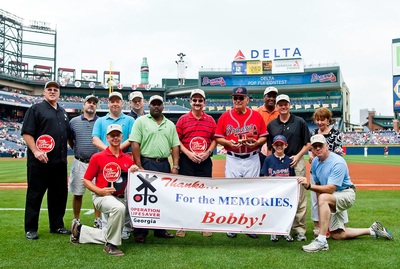
OL Night at the Braves, when Bobby Cox retired.
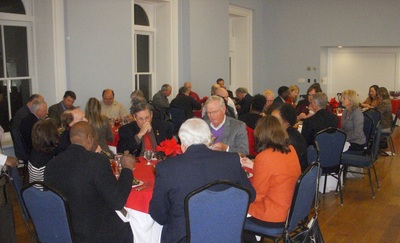
Christmas Luncheon 2015

Santa’s OL helpers on the GA Northeastern Railroad’s “Santa Train.”
World Traffic Safety Symposium, New York City Automobile Dealers Association (Jennie Glasgow receiving World Award)
Images from the huge Professional Photographers
Convention and Expo in Atlanta.






Videos
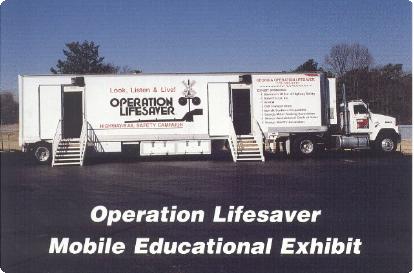
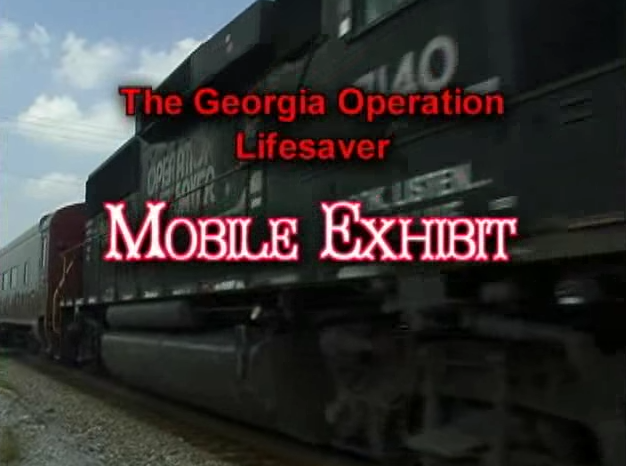
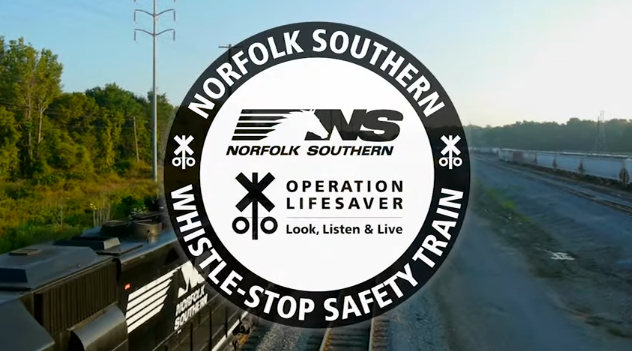
11 years ago, Georgia Operation Lifesaver was at its State Capitol with its "Georgia Launch United Nations 'Decade of Action for Road Safety' 2011-2020" Part 1:
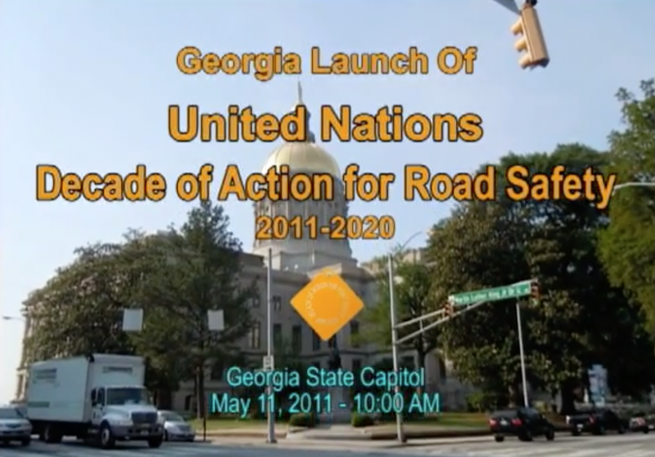
Part 2 of the Georgia Operation Lifesaver at the State Capitol with its "Georgia Launch United Nations 'Decade of Action for Road Safety' 2011-2020":
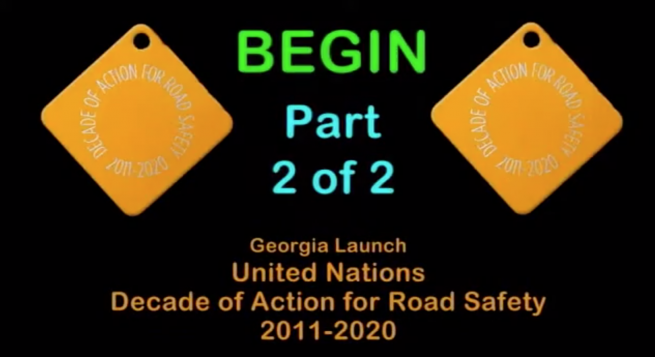
Links
Operation Lifesaver Links
- Operation Lifesaver Inc. (national program)
- Operation Lifesaver in other states